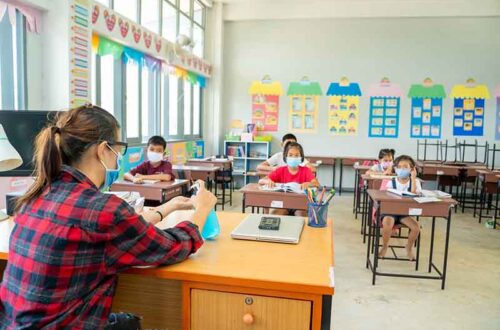
Private Schools: How to Decide
With heightened awareness of the impact of stereotypes and biases in our world, I considered the labeling in this publication of private schools as ‘a posher place to educate children’ as an opportunity to provide another perspective about fee-based schools.
I get it: “posh” is an easy name to call a private (or independent) school. With an annual tuition—what families often look at first—I’ve heard the misperception many times.
The thing about labeling however is that it affects expectations—of people, places, experiences, everything. I bristled momentarily at the description because it fails to uphold the central idea of education– learning.
My perspective comes from personal and professional experience with both types of schools, but I am not an expert. I offer my perspective to encourage readers who are hopeful and committed to their children’s education to investigate all their options. Options do exist.
Although I am currently employed by an independent school, I am a long- standing supporter of public schools and have years of experience in the public education arena.
Two of my three children graduated from public schools (as did I). I ran an education foundation that raised money and funded programs for public schools, and was elected to the Board of Trustees, serving a four-year public governance term in a TK-8 district. I’ve been on many public school committees from strategic planning, scheduling, budget, negotiations and program advisory, to do my part to help.
I mentioned two of my three kids. My third child went from K-7th in public schools and then moved to an independent school in 8th grade.
The main reason for the move is because he’s a social learner; he understands when he talks about things. He needs to be visible and engaged, to be able to ask frequent questions and clarify. That’s challenging in classrooms of 20-30 pupils.
We wanted an educational experience that offered more individualized learning in smaller class sizes to keep him interested. The closer he moved to high school, the more it seemed his interest in school waned. In public school I watched his grades slump while his self-esteem spiraled.
I am thankful every day that he moved. He probably misses being in the bigger public school environment where he could disappear from time to time— fly under the radar. I’m glad his current teachers don’t let him do that. And the anecdotal feedback I get when for he involves me in a the preparation for a debate he’s having in history, or when he talks to me about what he’s reading and what he thinks about it—is proof that he’s switched-on at school. That’s what I want to see: evidence of thinking, consideration of new ideas, interest in learning.
Independent schools provide different educational models, standards, and practices than public schools. These different ways of educating, these different approaches, offer alternatives to families to achieve what I believe everyone wants; the best education possible for their unique, highly-individual children.
That is probably the best place to start when considering public or private education: how does your child best learn? What are things that are important to have in place to support your child’s education? Do you have ideological, religious, or other considerations that would impact your decision?
There is no educational panacea. Public schools are right for some kids, independent schools are right for others. Ruling out one model however by assuming that it’s only for the wealthy takes a lot of good options off the table.
In addition to giving my son a learning environment that addresses his needs, the independent school he attends offers our family a values-aligned education. Public schools, because they are government entities, operate, in general, within the definition of education that the State of California defines as satisfactory.
Now that I’ve been in both worlds, I believe the main difference between public and independent schools is in their decision making. Independent schools operate outside the realm of public governance, are accredited by agencies like the National Association of Independent Schools (NAIS) and are independently governed by a Board of Directors.
In an independent school, decisions align with their values, and their values represent the community they serve. Decision making and accountability at an independent school is directly connected to the community it serves.
Whatever an independent school’s values—be it small class sizes, innovation, more intense academic rigor, citizenship, longer school days, faith-based education, a focus on a particular subject area like performing arts or STEM, design-thinking, project-based learning, faculty who are subject-matter experts—they have the independence, the freedom, to make programmatic and personnel decisions to support their values. They can act swiftly to adjust to (for example) new research, new understanding of achievement, stress, or child development, and technological advancements.
Public schools, including public charter schools, must operate in accordance with state and federal law. Even charter schools operate with oversight from their local authority, or authorizer, their County Office of Education or State Board of Education.
If you develop a list of criteria essential to your child’s optimal learning environment, you can assess various schools to see how they might address those criteria. Visit them. Both public and private schools have opportunities to get to know the school before a student enrolls there. Visiting a school will help you get to know its community— and assess fit.
Public schools are free. Independent schools are tuition-based. For many families, like mine, paying tuition is a high bar. I never thought I could afford it. Here’s what I’ve learned. Every independent school I looked at offers a Financial Aid program. These are in place to help independent schools attract a diverse community of students and families who also believe in the values of the school. The school my son is in has students from Watsonville to San Jose. His friends come from all over, but the one consistency is that their parents believe in the type of education his school offers, and in that commitment to its values, create a strong community.
Parents Should Consider
How will your child get to school? Your child’s school likely needs to be within a certain distance of your home or workplace, unless the school provides transportation.
• Class size? Is your child more comfortable with more or fewer peers?
• Will you need before- or after-school childcare? Some private schools provide this, but others don’t.
• Can you afford tuition? Private school is a major expense for most families. Scholarships are often available, but they may come with strings, like parental volunteer hours.
• Does the school offer the services your child needs? Does the school have special education programs or on-site nurses who can administer medicine.
• Can all of your children attend the school? Schools that teach more grade levels and prioritize sibling admissions could make life easier for your family.
• Will you be expected to stay heavily involved at the school as a parent? Some private schools require or promote more parental involvement in school activities and decisions.
• Extracurricular Activities? Does the school offer sports, art, music or activities that can shape a child’s life beyond academics?






